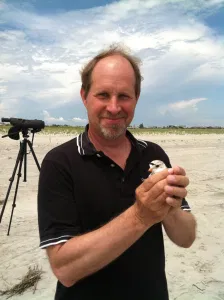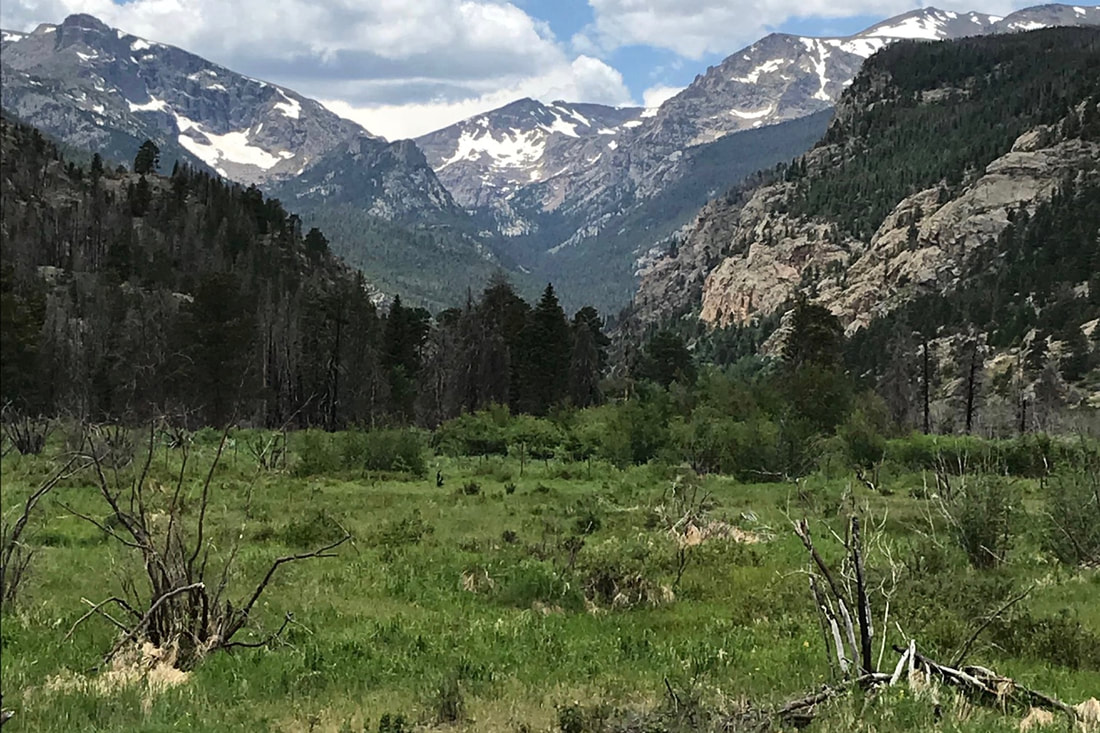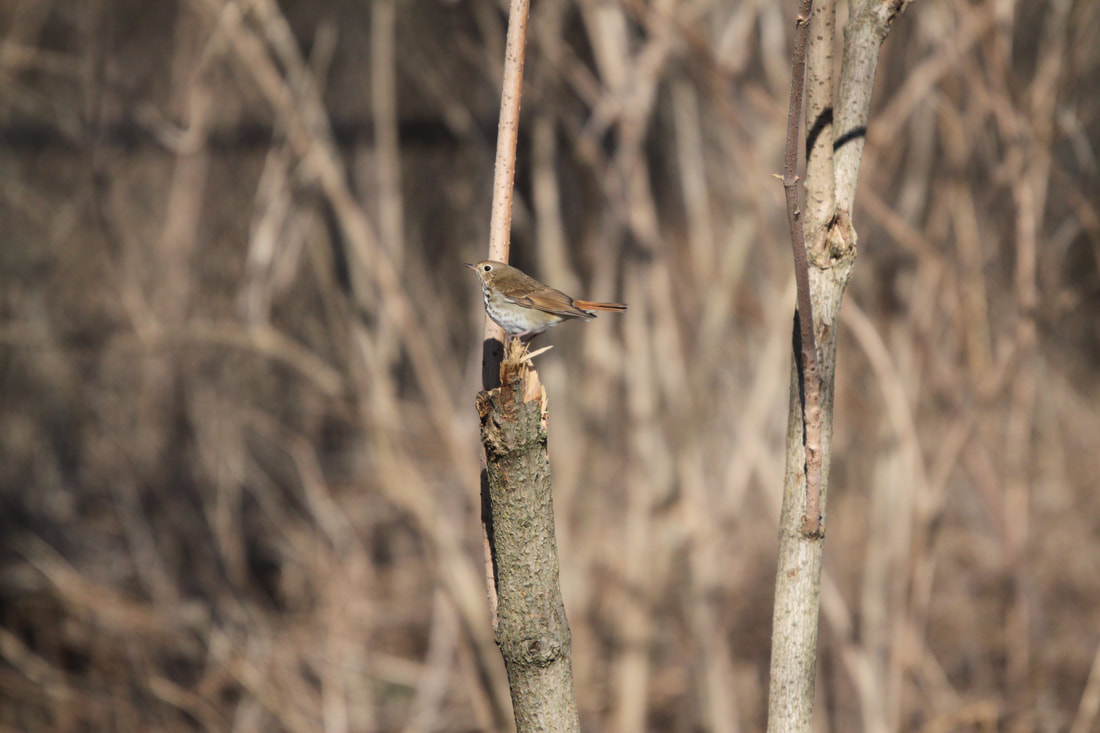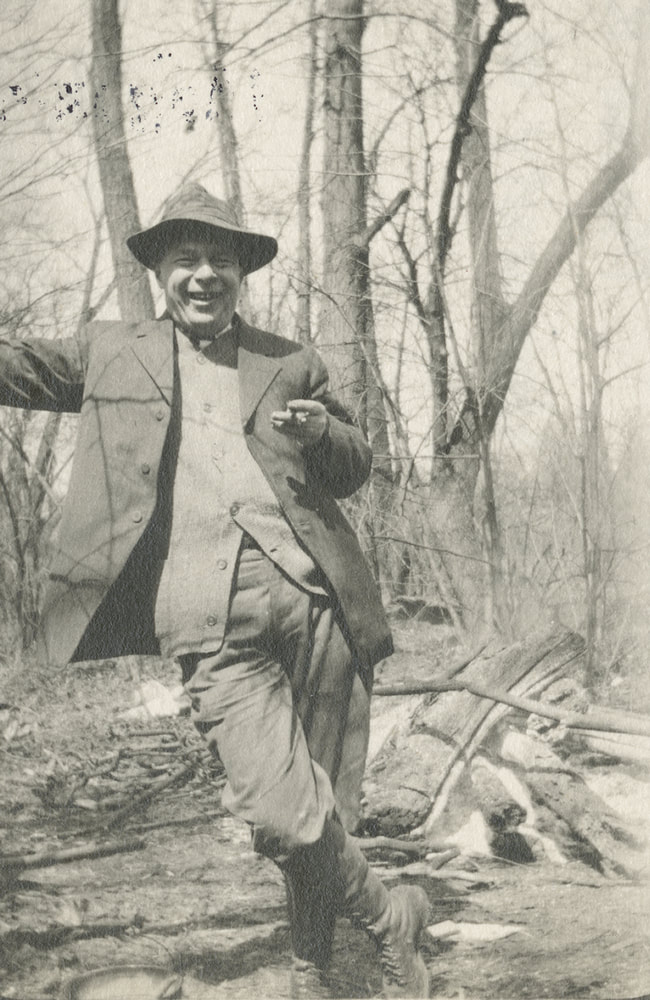|
By Georgie Lellman
Despite the odds, an innovative new bill hailed as the greatest piece of land conservation legislation in decades became law this summer. The bipartisan Great American Outdoors Act, sponsored by Republican Senator Cory Gardner of Colorado, received support from 59 senators and passed on June 17. It was a rare moment of bipartisanship in today’s political climate, making the August 4 signing of the law even more monumental. But what exactly does the Great American Outdoors Act actually accomplish? The act has two primary goals. Its long-term objective is to provide permanent funding for the Land and Water Conservation Fund (LWCF), which funds public lands. The LWCF was created in 1965 by President Lyndon B. Johnson, but has only been funded by Congress in its full amount of $900 million per year twice since its creation. In the past, the funds have instead been used for unrelated projects. The Great American Outdoors Act ensures that the funds, from this point forward will be allocated annually to the LWCF to conserve and protect public lands across the nation. These new permanent funds will increase funding for the U.S. Forest Service by $285 million annually, and by $95 million annually for both the Bureau of Land Management and the U.S. Fish and Wildlife Service. Together, these organizations encompass over 588 million acres of land, that's approximately five times the size of the entire state of California. And, while public lands should see extraordinary benefits from the Great American Outdoors Act, it will also provide advantages for communities across the nation. According to economists, every dollar invested by the Land and Water Conservation Fund generates a $4 return in their communities, boosting the economies in localities closely connected with public lands. The secondary aim of the legislation stipulates that $9.5 billion be set aside over the course of the next five years in the Public Lands Restoration Legacy Fund to address previously neglected maintenance issues that affect many national and state parks. According to the American Hiking Society, “There is a nearly $12 billion backlog of maintenance projects across our public lands. When annual maintenance needs go unaddressed, long-term problems arise, seriously hampering the public’s access to outdoor recreation.” This backlog has been created by an increase in visitors to public lands by over 50% since 1980 and a parks budget that has remained relatively unchanged. Of the money placed in the Public Lands Restoration Legacy Fund, $6.5 billion is specifically intended to be used across the national park system, while the remaining funds will aid wildlife refuges, forests, and other public lands. Interestingly, the $1.9 billion provided annually will be generated from oil and gas drilling revenues on the Outer Continental Shelf, submerged land along the east and west coasts of the U.S. as well as the Gulf of Mexico. This allows the American people to see a return for energy development and resources taken from their public land. The passing of the Great American Outdoors Act is a sign of hope that the challenges that the American people face in pursuing outdoor recreation opportunities at national and state parks will now be addressed through this influx of funds, which have been absent for decades. The Great American Outdoors Act deserves praise as it will help to ensure the continued beauty of our natural spaces and that public lands remain accessible for generations to come. Georgie Lellman is a recent graduate of Kenyon College and an intern for Turnstone Strategies. She is interested in environmental law and passionate about wildlife issues. Sources: The Wilderness Society. 2020. “Land and Water Conservation Fund fully funded after decades of uncertainty." Harsha, Dan. 2020. “The biggest land conservation legislation in a generation”. The Harvard Gazette. Leasca, Stacey. 2020. “The Great American Outdoors Act Could Give Billions of Dollars to National Parks — Here’s What You Need to Know”. Travel + Leisure.
0 Comments
By Georgie Lellman On March 26, as the pandemic was beginning to have serious and far-reaching impacts within the United States, Chicago Mayor Lori Lightfoot closed the Lake Michigan lakefront for all recreational activities. The closure meant that Montrose Point, a spot that attracts crowds of birdwatchers--and birds--would have nearly zero observations in April and May, a far cry from the 237 bird species observed in 2019. “It’s a perfect place for migrants flying over or along the lake to land, rest, and fuel up for their next flight,” said birdwatcher Isoo O’Brien. Montrose attracts birdwatchers because of its convenient location, diversity of habitats, and eye-level bird sightings. However, because of the closure, eBird data show how birders went elsewhere. Graceland Cemetery, a shaded cemetery and arboretum just blocks from Montrose, experienced one of the biggest increases in observations, even as it has slowly been gaining in popularity among birders in recent years. Graceland recorded more bird species in 2020 spring migration (153 to be exact) than had been recorded in the last 10 years combined. Additionally, Graceland saw 30 distinct warbler species this past spring, while recording only 28 species during spring migration over the last decade. Weekly maximum sightings during spring migration for several migratory species included: 35 Hermit Thrushes, 20 Rose-breasted Grosbeaks and 20 Baltimore Orioles, compared to previous records of 17, 15 and nine observations of these species, respectively. “Graceland was the alternative destination for people seeking the convenience of a nearby migrant trap,” explains O’Brien, a high school senior who is trying to break Cook County’s big year record by observing 281 distinct species.
O’Brien spent time birdwatching at Northwestern University, Jackson Park and southern Cook County. But another site, Washington Park on the South Side, also experienced dramatic increases in the number of bird species observed, reaching 193 this season, an increase of over 65 species from its previous maximum of 125 species during spring migration in 2017. The number of warbler species observed at Washington Park also grew, with 35 species recorded this season compared to 30 warbler species recorded over the last decade. As bird observations of spring migration were heavily impacted in the Chicago area by the Covid-19 pandemic, it will be interesting to see if Graceland Cemetery and Washington Park continue to be popular birdwatching destinations through fall migration, with Montrose Point partially open for recreational activity. Montrose Point and its wildlife had a quiet and relaxed spring migration. Birdwatchers did not relent, but turned their attention elsewhere, discovering new sites, like Graceland, and bolstering the eBird data available for these less popular destinations. Even with discoveries of new birding sites, O’Brien, who prefers Montrose Point, expects typical patterns to return in the future. “I imagine next spring [Graceland Cemetery] won't be as popular as it was this year,” he says. Georgie Lellman is a recent graduate of Kenyon College and an intern for Turnstone Strategies. She is interested in environmental law and passionate about wildlife issues. Contact Georgie at [email protected]. By Kara Morrison
Henry Chandler Cowles passed away on this date in 1939 at 70 years of age. Cowles was an American botanist and early ecologist who was fundamental in founding the Ecological Society of America and his work helped lead to the creation of Indiana Dunes National Park. Cowles’ research emphasized and investigated the inherently changing nature of plants and their natural environment. More importantly, unlike many botanists and ecologists at the time, he was less focused on his own research and more focused on the work of his students. Cowles often took his University of Chicago students to areas around the Great Lakes and even as far as the West Coast. Although he traveled far and wide to study ecology, his greatest influence was his own local area. He first visited the Indiana Dunes in 1896, and continued to travel to observe the dunes throughout various seasons over the years, eventually developing concepts around plant succession and climax formation that would become crucial to ecological studies. Cowles Bog, a part of what is now Indiana Dunes National Park, is named in honor of Cowles and his work that brought such widespread attention to the Indiana Dunes. Kara Morrison is a recent graduate of Kenyon College and a contributor to the Turnstone Strategies blog. She is passionate about making historical and educational information accessible to the public. Sources cited: National Geographic Resource Library, University of Chicago Centennial Catalogues 
Todd Pover is a Senior Wildlife Biologist at the Conserve Wildlife Foundation of New Jersey and manages populations of beach nesting birds including piping plovers, least terns, and black skimmers. We had the opportunity to speak with him about the importance of piping plover monitoring and the challenges these endangered birds face. Edited for length and clarity.
By Georgie Lellman Why is monitoring piping plovers so important? Well, first of all piping plovers are federally listed and in New Jersey, where I do most of my breeding field work, they’re state listed. So, in order to be able to track the species you have to have really solid and pretty intensive monitoring. If you are not doing really close monitoring you can’t figure out the causes for nest or brood loss. Because our goal is to recover the species, in order to better manage them we have to know those causes. Piping plovers are in a sandy environment, so when you get a windy day or a rainy day the evidence of predators can disappear quickly. So you really need to be there on a daily basis to be able to determine some of these issues. What ecological role do piping plovers play? This is a question I hear quite frequently over a couple of decades of work. I think a lot of people focus on species that when you pull them out of the ecosystem the whole system collapses. That’s probably not the case for piping plovers. We don’t know the intricate ecological web of how these species fit together, but I think more importantly piping plovers sort of represent whether you have a healthy functioning ecosystem, because those that are severely altered and changed less frequently have piping plovers. In New Jersey we are a highly developed and recreated beach so we have these protected natural areas and that is where our highest concentration of plovers are. How did the 2020 monitoring season go? This year was a particular challenge because of COVID and the pandemic. We did find, because nature was one of the things that people were able to get out into, our beaches were actually busier than normal in the spring, which is a critical time when birds are trying to set up. That could have impacted them in a negative way. Generally speaking, birds did pretty well in New Jersey this year. I'm responsible for Edwin B. Forsythe National Wildlife Refuge and that site has 39 pairs of piping plovers this season and is one of the most important spots in New Jersey and happened to do very well. Of the 39 pairs, they fledged about 1.7 chicks per pair, which is above the Atlantic Coast Recovery level of 1.5. In New Jersey this is our Achilles heel. We have historically had a lot of difficulty fledging young. We do pretty well with our hatch rate, but fledging is where we come up short. So for us to have a high level like that was a good outcome for us. Why do you generally have low success fledging chicks? Well, there are a lot of factors, so it's hard to pinpoint the exact one. It could be a bad weather year or something along those lines, but generally speaking New Jersey is really highly developed. In fact, beaches are so highly used that we could put a fence around the areas or the nest and keep people out but once the piping plovers hatch they'll leave those areas to forage at the water's edge. Often those areas at public beaches can’t be protected in the same intensive way. That impacts their survival. Because the breeding ground is so close to the beach area, there are restaurants and houses and it's close to sources of food for predators, so we have a higher concentration of predators around the beach. It's a combination of those things. Lastly, the factor we understand least is highly engineered beachfill, which we think probably impacts the foraging suitability. More and more we’re understanding that access to really good undisturbed, but also highly productive foraging areas, is really important for survival for those chicks. How have the numbers of piping plover pairs changed over the time you have been monitoring them in New Jersey? Well for me, yeah. This is 25 years plus for me, so I’ve seen a lot of fluctuation. From a high of about 140 pairs to a low of 90-some pairs, percentage wise that's a big change. Unfortunately, we’re sort of at the lower edge of that at the moment and we’re struggling to get back. We have years where we have better numbers, but we’re a little bit stuck on the wall at the moment. For the last 5 years we have seen higher fledge rates than we probably have ever seen over the same period so we’re hoping that’s going to push us to the next level. A huge caveat though is once the birds leave you’re facing the same issues. What happens is during migration and wintering the birds spend more time away from the breeding grounds than on it and their survival during migration or over the winter impacts our populations. Hurricanes that have hit Florida and the Bahamas, where you have wintering plovers, have really bad impacts potentially on survival. So, we can have a really good year, but have a lot of mortality over the winter due to hurricanes or other factors. What are some of the biggest obstacles to the success and survival of piping plovers in New Jersey? How do you overcome these obstacles? Well, the habitat really matters and I think it all starts with really good habitat, but we’ve also seen situations where birds can do okay in slightly less suitable habitat. Unfortunately it's not a magic button answer. It really is a case where we need everything for them to do well. So you need the habitat, really strong protection, and management of everything from the people component to the predators. And then I think outreach is really important. I think we’ve seen that, in a lot of cases, people don’t really want to disturb or negatively impact birds, but they just aren’t aware that their activity is going [to have that impact]. So, trying to have someone at the sites, the public ones at least, is a really important part of it as well. Communication, outreach, and management all have to fit together for a successful piping plover program. Georgie Lellman is a recent graduate of Kenyon College and an intern for Turnstone Strategies. She is interested in environmental law and passionate about wildlife issues.
Last year, we created our first film, with the release of "Monty and Rose," a 23-minute documentary about the endangered piping plovers of Chicago's Montrose Beach. The film became an official selection of the One Earth Film Festival in Chicago and the I See You Awards in Detroit.
Monty and Rose returned to Montrose Beach this spring, and filming soon began for a second film, "Monty and Rose II" that will tell the 2020 story while re-visiting the history of the dunes, a globally rare ecosystem that developed in the most urban of settings. The first teaser for the next film is now available (above). Production will continue through the rest of 2020 with a planned release of early 2021. For more information, visit www.montyandrose.net. This is the second in a series of posts looking back on the start of Turnstone Strategies. This post first appeared as the launch to a Kickstarter fundraising effort in July 2019.
Earlier this year I started birding more frequently at one of my favorite places, Montrose Point on the North Side of Chicago, which is perhaps a top-five birding locale nationally. Among the many birds passing through nearby Montrose Beach Dunes was a piping plover, Dodger, who spent most of the winter at the point. In fact, Dodger rang in 2019 at the point, the latest winter record for a piping plover in Illinois. In May, I took a somewhat unexpected trip to northern Michigan. It just so happened that my destination was steps from a beach hosting several piping plover nests. I wasn't there to see the plovers, but happened upon them. I thought back to Dodger and sort of chuckled to myself. Then something truly miraculous happened at Montrose -- a pair of endangered piping plovers began nesting there this June, the first nesting pair in Chicago in at least 64 years. The birds that became known as Monty and Rose set up in one of the busiest areas of one of the busiest beaches in Chicago. I am launching this Kickstarter to get the funding to film and edit a short documentary, "Monty & Rose: The Endangered Piping Plovers of Montrose Point." The documentary will not result in any profits for me and will be used to raise awareness of the plovers and the conservation of Montrose Beach Dunes and Montrose Point. As of now, we have a short clip reel, featuring Monty, Rose and other birds and an interview with Chicago Ornithological Society President Carl Giometti. If/when I have the funding, I would set up interviews with more birders and share further dimensions of the story. We also would have the budget for professional graphics, production, editing and possibly music. Note: There has been quite a bit in the news lately about the plovers in relation to a concert planned for Montrose in August. The goal here is to lift the narrative above the concert issues and create something lasting to benefit the birds of this special site on the North Side of Chicago. The piping plover has been a talisman of sorts for me in the past year. When Monty and Rose began demonstrating nesting behavior at Montrose Point it seemed too great an opportunity not to capture. One other thing that motivated me: there was a birding documentary shot here in Chicago by a couple of guys from New York a few months ago. I'm not sure it captured the story of Montrose Point in the way I would tell it, or in a way that is true to the quirky nature of birding there. Frankly it bugged me that they flew in from New York without consulting local birders, who are a deeply knowledgeable group and a colorful cast of characters to boot. That's really stuck with me. "Monty and Rose" will air on WTTW Channel 11 on Saturday, May 2, at 5:30 p.m. Visit www.montyandrose.net for more info. This is the first in a series of posts looking back on the start of Turnstone Strategies. This post first appeared in March 2017 as "After getting an MBA, we head out into the real world — our careers — while never actually having left."
It’s my first year as an MBA student and I’m sitting in a tiny office with a TA, going over Microeconomics problem sets. On this day, I’m trying to figure out how to set up a demand curve and identify the market equilibrium in the global steel industry. The TA takes my pencil and draws horizontal lines showing the production capacity of each plant in the industry. Then he draws a sloping line that represents demand. The concept starts to make sense. I continue to practice daily ahead of the final, which accounts for nearly 100% of the grade. When the final comes, I pounce on the first problem, which luckily is the same one the TA showed me, one that I reviewed over and over. The final ends up coming down to a set of true/false questions on Cournot reaction functions. I have to guess on a few of those but still end up with a solid score on the test. As I complete my MBA this week [March 5, 2017], I look back on plenty of indelible academic, and social experiences. As classmates, we spent hundreds of hours together, making the time pass through the drudgery of group meetings, conference calls and occasionally dry subject matter. Our lives became compartmentalized into Home, School and Work. And whatever happened at Work was left behind when arriving at School. There was a wonderful comfort in the pre-class conversation and idle observations about classes and the world and I may miss that the most. Then there are the classes, the heavy core classes like Microeconomics and Finance and the fun ones in Marketing and Management. We studied well-known business cases and obscure ones that were sometimes the most memorable (just this past quarter, Steinway pianos and the Thai scotch industry). After a while, the concepts from the courses began to come together like a puzzle and we had at least a passing answer for everything. We learned to posit theories with incomplete information, and make reasonable attempts to back them up with evidence. And as someone in the nonprofit space, I had experiences I never would have thought possible, including contributing to the launch of a new service in the vehicle battery market for a Fortune 100 firm. It’s important to acknowledge that even being able to apply to an MBA program, though, comes from a place of extreme privilege. Most everything we did took place in a bubble, a comfortable space with its own norms and a fair share of incongruities. It was a sort of dream world where one can be earnest and a little smug, caring and outright capitalist, generous and completely self-interested. It’s unreasonable to think that the world will always present itself as cleanly as it did in school, with the neatly defined case studies and hypercollaborative colleagues. Where it’s OK to say that the answer is “it depends” and where quantitative, verifiable information is always preferred over gut instinct or intuition. It’s unlikely most of us will ever be able to open a steel mill in Brazil or tell the CEO of Airbus what to do in its unending battle with Boeing, and we may not be able to decide whether Miele enters the Hong Kong market positioned as an ultra-luxury brand. In reality, most of our decisions will probably always be more mundane. After finishing our MBAs, we head out into the real world — our careers — while never actually having left. What has changed, though, is that we’ve strengthened our ability to persist, have stretched the boundaries of our time and resources, can better frame the decisions we make at work and maybe even developed a new curiosity about the world. And that’s the most important lesson, one that ran through my head over and over, even in Microeconomics: to above all else always value growing and learning. And that’s what I’ll take away most: never stop learning. Ever. Every organization should have a strategic plan. But getting off on the right foot will set you up for success later. Here are some questions to consider, from the perspective of someone who's been immersed in many strategic plans through the years--each tip preceded by a Star Wars quote (all from the first trilogy, of course).
1. "These are not the droids you are looking for." Is strategic planning actually what you need? A strategic plan will not be a panacea for low revenue, poor morale or a hostile political environment. It can help with those things, but it will not be the only solution. 2. "It's the ship that made the Kessel Run in less than 12 parsecs!" Is this the right time to start a strategic plan? Leadership and other staff transitions, seasonality, resources and operational capacity are all factors to consider. The most effective plans take time, from research to discussion to articulating recommendations. 3. "I've got something. Not much, but it could be a life form." Do you have the capacity to handle the plan internally or is outside facilitation needed? Some organizations will be in position to have a staff or Board member gather research, lead discussion sessions, make recommendations and write the plan. But the benefits of having an outside, neutral perspective may outweigh the benefits of handling it internally. 4. "Do or do not. There is no try." Is there initial discovery that could be done internally right now? Beginning to collect key data points can jumpstart your process. Then your first internal planning meeting will have some information to stoke dialog right away. 5. "You will go to the Dagobah system. There you will learn from Yoda." Are there upcoming venues for starting a strategic plan conversation? A strategic plan conversation can be added to the agenda at retreats, executive team meetings and Board meetings. Kicking off your next plan may not be all that far away. Finally, the strategic plan needn't feel like a burden or extra work. Rather it should fit into or enhance your daily activities as an organization. The data and discussion provided by the plan can make an impact right away. Turnstone can write and facilitate strategic plans. Contact us for more information. I had a great time discussing "Monty and Rose," the film we made about endangered Great Lakes piping plovers, on Fox 32's "Good Day Chicago" on Jan. 20. You can watch the appearance here.
By Ellie Raidt
It is well known worldwide that we are in the midst of an environmental apocalypse. Our planet cannot adapt to the way we are developing. With increasing population and demand for new technologies, material goods, food, and entertainment, it is difficult for our environment and ecosystem to stay stable. Our home is choking on our excessive level of fossil fuel and drowning in our rising seas. This is not only a risk for humanity, but a burden for the youth of the world to clean up after those before them who left this mess. For years, the newest generations have been making it clear to the leaders of the world that they need to work harder toward the end goal of a clean Earth. Youth are making their voices heard and are not afraid to step up and speak up to those in power. For example, young women like Varshini Prakash, who led a 150-student protest outside then-House Minority Leader Nancy Pelosi's office. Also Xiye Bastida, who is one of the many leaders of the youth climate movement. Young men like Benji Backer, who, despite being conservative, submitted his testimony to Congress stating that environmental wellness should be world governments’ No. 1 priority, as it impacts every single person. Also Vic Barrett, who is a part of the Alliance for Climate Education, one of the most important movements in the world today. Lastly, the renowned Greta Thunberg, who at only 16 years old has spoken to United Nations leaders about how they have betrayed the young people of the world by leaving a mess of a planet. In August of 2018, Thunberg began the soon worldwide school strike by sitting on the steps of the Swedish Parliament every Friday in a silent, solitary protest. Thirteen months later, this led to a worldwide strike of about 7.6 million participants throughout 185 countries, the largest climate strike in history. Millions marched the streets with signs reading clever statements on single-use plastics and fossil fuels, grabbing the attention of pedestrians, city-goers, and most importantly, the world’s political leaders. In December Thunberg was named Time’s Person of the Year. These people are making it clear that they are willing to stand for the one thing that every person has in common: our planet and home. It is still unclear exactly how the United Nations will act upon the requests being made from millions of people across the globe, if at all. One thing is clear: the Climate Crisis is making headlines and being acknowledged, which is more than what we have had in far too long. If politicians do not act when millions of people are on the streets rather than at school or work, then there is likely nothing that will impact their judgment. If humans are going to reach the year 3000, the world needs to stop talking and start acting. Carbon emissions must be cut to zero, agriculture must become entirely sustainable, and green energy must be implemented as part of daily life. The Climate Crisis is a mountain that is seemingly impossible to summit, but with people like Greta, Benji, Varshini, Vic, Xiye, and the almost 8 million activists standing up for our home, there is hope for a green future. Ellie Raidt is a first-year high school student who previously wrote a piece for The Fact Sheet. |
The blog is a space for stories of the natural world and the occasional post about communications and strategy.
Archives
September 2022
|






 RSS Feed
RSS Feed